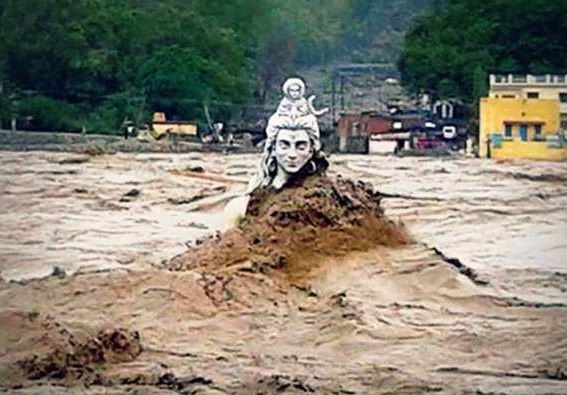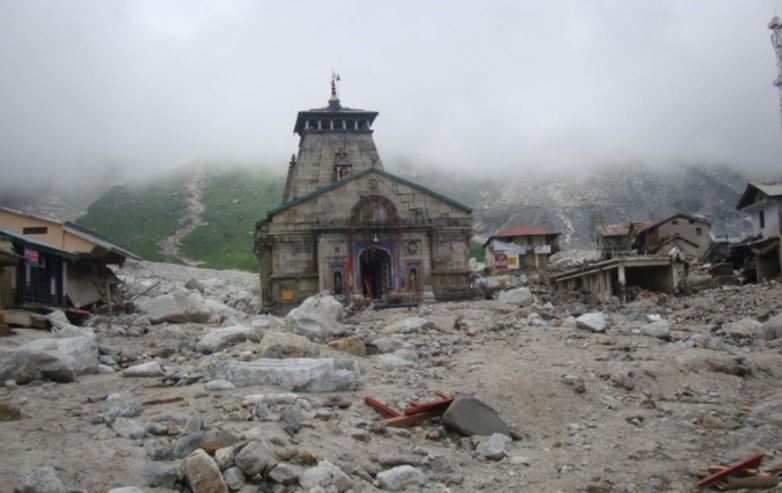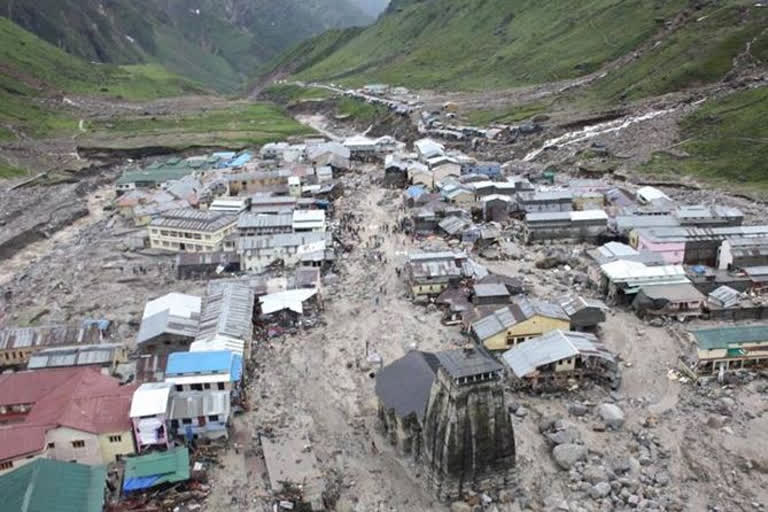Dehradun/Rudraprayag: June 16, 2013, is recorded as a dark day in Uttarakhand's history, as it was on this day that flash floods hit the Kedarnath valley, claiming over 4,000 lives. Over eight years since this catastrophe, thousands of people lost their lives, lakhs lost their livelihood, thousands turned homeless, and none have any idea as to how many actually died during the calamity. In this disaster, not only Indian citizens but also people from abroad lost their lives. The Kedarnath area in Uttarakhand had received unprecedented heavy rainfall between June 14 to June 17 that year and the Chorabari lake had collapsed due to cloudburst, resulting in a major flash flood.
The Indian Army, Air Force, Navy, Indo-Tibetan Border Police (ITBP), National Disaster Response Force (NDRF), Public Works Department and local administrations worked together for quick rescue operations. Many soldiers were deployed for the rescue missions while activists of political and social organisations were also involved in the rescue and management of relief centres. The national highway and other important roads were closed to regular traffic. Helicopters were used to rescue people.
Read: Uttarakhand postpones Chardham Yatra
23 people killed in helicopter accidents
Helicopter accidents also took place in Kedarnath after the disaster, in which Air Force personnel and other passengers lost their lives. During the Kedarnath disaster of 2013, three helicopters, including the Mi-17 of the Indian Air Force, had crashed while carrying out a rescue operation. A total of 23 people died in these accidents. At the same time, after the massive devastation in Kedarnath on June 19, the Central Government entrusted the Air Force with the responsibility of rescue there. After this, for nine days, the Air Force saved thousands of lives by carrying out rescue atop the hills of Kedarnath Dham.

Mi-17 crash
On 25 June 2013, an Mi-17 helicopter of the Indian Air Force had reached Kedarnath from Gauchar via Guptkashi carrying wood needed for the cremation of those killed in the disaster. On its return at around 2 pm, the helicopter crashed due to bad weather and it took two days to trace the remnants of the crashed chopper. All 20 people aboard this helicopter were killed. They include five crew members, two pilots of the Air Force, nine members of the NDRF (National Disaster Response Force) and six members of the ITBP (Indo-Tibetan Border Police).

Read: Now, devotees to get Siva lingas as prasad in Kedarnath temple
Reconstruction work in Kedarnath
Shortly after the disaster, the reconstruction work in Kedarnath began. The first challenge was to repair the walkway from Gaurikund to Kedarnath, which was completed in 2014. Along with this, the reconstruction of helipads and cottages were taken up on a war footing by bringing in huge equipment to the Dham. In 2015, bio-toilets, VIP helipads and a security wall were also constructed. A ghat was also built on Mandakini and Saraswati rivers.
Jindal Group handed the responsibility
For the first three-four years in Kedarnath, the team of Nehru Mountaineering Institute was involved in the reconstruction work post which Jindal Group was entrusted with the responsibility. Currently, the construction is being carried out by the Jindal Group in partnership with Wood Stone Company. Three mega projects are currently being implemented in Uttarakhand - Adi Guru Shankaracharya Samadhi Sthal, Teerth Purohit Bhawan and Aastha Path.
Read: Skeletal remains of 4 persons found near Kedarnath
PM's attachment to Kedarnath
Prime Minister Narendra Modi has a deep faith in Kedarnath. It is evident from the fact that in the 1980s-90s, PM Modi did penance in Garud Chatti. He has visited Kedarnath thrice so far after becoming the Prime Minister as work pertaining to five of his dream projects are underway. Of these, two have been completed.
Kedarnath temple records the highest footfall of pilgrims
In 2019, the Kedarnath temple recorded the highest footfall of pilgrims. A total of 7,32,241 pilgrims had made a new record by visiting Baba Kedar in 2019 and within one-and-a-half-month, around 7,35,032 passengers had visited the shrine, breaking the earlier record numbers. Almost over 10 lakh devotees had visited the shrine that year. However, in 2020, the shrine was shut due to COVID-19. From 1988 to 1999, only about one and a half lakh pilgrims used to reach Kedarnath Dham every year. Whereas, from the year 2000 to 2005, this number increased to about 2.5 to 3 lakhs per year. It was from 2006, that the number of passengers witnessed an increase. In 2012, despite excessive snowfall, 5.73 lakh passengers visited the shrine. In 2013, following the terrible disaster in Kedarnath, the pilgrimage was stopped temporarily. In 2014, 40,832 pilgrims; in 2015, 1,54,430 people; in 2016, 3,95,033 pilgrims; in 2017, 4,71,235 and in 2018, 7,32,241 people paid a visit to the shrine of Baba Kedar.



